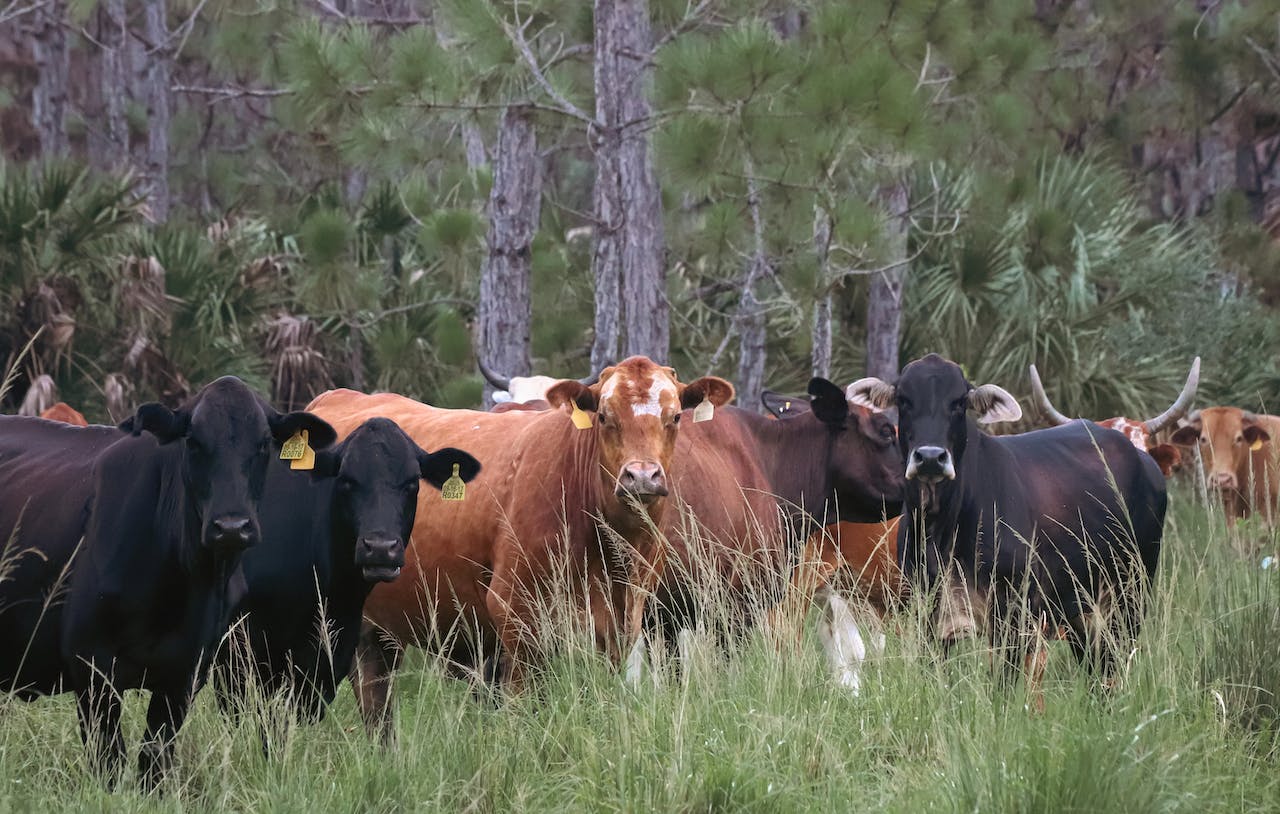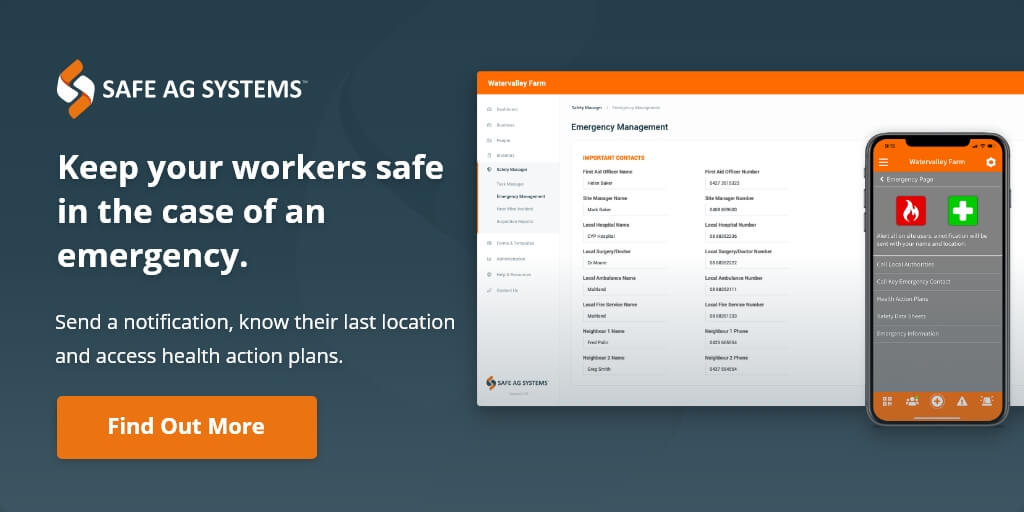“It’s stinking hot!”
If you’ve heard that phrase before you're well versed with Australia's scorching summers.
Despite the variety of climates in Australia, heat is the one element known throughout the country. Whether it's a dry or a wet heat, it's exhausting to be out in, no matter the geographical location.
Despite that, most of our country's agricultural industries work outside. This means long hours in the sun with limited shade and no air conditioning.
Do it 5 days a week with thirty-plus-degree temperatures and it’s pretty taxing on your body!
But when is it too hot to work?
Different commodities also have different and varying levels of heat-related risks. Workers in livestock won’t have the same heat-related stress as those in Horticulture.
Let's dive into the different areas of agriculture and discover each heat-related risks.
Who’s responsible for maintaining your cool?
Like most workforces, your company and supervisors are liable for creating a safe working environment. This includes extreme weather like high temperatures or heat waves.
Work Health and Safety Laws in Australia don’t dictate a “stop work” temperature. It’s up to your Person Conducting Business or Undertaking (PCBU) to evaluate the risk and decide whether it's too hot to work.
Some workers brush off the risks of working in the heat, but it's genuinely a hazard that needs to be recognised. In April 2023 a farmer worker was found deceased after working outside on a hot day.
“Early investigations indicated the worker had complained of cramps while working outside and had returned to a shed on the property to rest and hydrate. It appears he attempted to leave the farm but was later found deceased.”
The human body needs to maintain a core temperature of 37 degrees. In hot weather, your body goes into overdrive in an attempt to cool you down. If your body can’t cope any longer you begin to overheat and suffer a heat-related illness.
Ways to Manage Safety in the Heat
To provide safe working conditions in the heat, a PCBU ‘must minimise the risk of heat-related illnesses as far as practicable’. An example would be altering work schedules to later or earlier in the morning to beat the day's heat.
Examples of other control measures:
-
Slowing down the pace of work
-
Supplying cool drinking water
- Provide seasonal workers with the opportunity to acclimate to hot weather.
- Train workers about working in hot conditions and the signs of heat-related illness
But, to have a significant impact on reducing heat-related illness, many control methods need to be used.
While your PCBU is liable for providing a safe work environment, you’re responsible for maintaining your own cool. You have your own duty of care to keep yourself hydrated and communicate when you’re feeling unwell.
Heat Risks in Different Commodities
Livestock
Say you’re mustering cattle from one paddock to another a few kilometres away. It’s a long trip on the back of a horse or bike.
But despite your Akubra or helmet, the sun is blaring down hot!
The longer you’re outside the higher the risks of heatstroke, heat exhaustion and dehydration increase. And don’t forget about sunburn, or worse skin cancer, if you didn’t slip, slop or slap!
But it's not only you that you have to think about. Your herd are also at risk of similar stress-related illnesses. Animals become frantic under stress and may place you at risk if they act irrationally.
With your welfare and your livestock at risk, add control measures for both of you.
-
Move stock earlier or later
-
Go at a slower pace to not overwork yourself or the livestock
-
Wear appropriate long-sleeved clothing
-
Apply sunscreen in areas not covered by clothing
See Caring for animals during extreme heat for further details

Horticulture
The horticulture industry hires thousands of seasonal workers per year. These workers are from all over the world and help out our industry for those short-term jobs that locals aren’t interested in.
Yet, hiring workers from overseas means their often not acclimatised to our weather.
Workers who have never been exposed to UV levels as high as Australia’s are at a higher risk of heat stress, heat stroke, sunburn and even skin cancer.
Considering adding the following control measures to aid your seasonal workers in the heat:
-
Schedule regular breaks
-
Appropriate clothing and PPE - light long-sleeved clothing, wide-brimmed hat, sunscreen, sunglasses
-
Provide breaks in the shade
Broadacre
Operating machinery on hot days introduces unique risks not commonly found in other industries. Using farm machinery in high temperatures can cause significant problems.
Tractors often overheat, which can cause serious engine problems if it happens frequently. Like yourself, your tractor needs fluids to stay cool. In this case, they need adequate levels of coolant.
Check your levels before putting the tractor to work and top up if needed. This will prevent any excess heat from damaging your machinery and potentially putting you at risk.
Another area to keep an eye on is your tyres. As we know heat makes objects expand. Tyres are no exception to this rule. Excessive heat can cause premature wear and tear and in some cases present a risk to your safety.
Tractors and harvesters also have several heat points to be cautious of. Not only from a burn perspective but also from a fire risk. Typical areas for concern are engine components such as the manifold, exhaust and turbocharger.
It only takes one spark or hot point to start a fire!
On hot days consider implementing these control measures:
-
Exercise extreme caution before harvesting, grinding, welding, slashing or mowing
-
Avoid driving vehicles through dry grass or crops - this is where the exhaust system can start fires
-
Take regular breaks - for you and your machines!
-
Work during cooler hours and avoid the midday heat.
-
Make it part of your pre-start checklist to check for straw or grass build-up, and hot bearings
-
Check coolant levels and the state of your tyres
Plan ahead and stay safe
Everyone’s guilty of working a few hot days in the sun. But it's how you manage it that's important.
With no temperature “cut off” for work, it's up to you and your PCBU to make the call or implement control measures relevant to your commodity and tasks.
If the forecast is predicted to be hot, identify any heat-related illness risks in the work environment. Once accessed, implement suitable control measures. Or better yet modify the environment so work may continue but workers are protected.
Australia’s summers can be brutal. Take precautions and protect yourself and others to the best of your abilities. SafeWork QLD provides brilliant information on how to identify and control heat risks.
Disclaimer: Content on this website may be of relevance to users outside of Australia, but content links and examples are specific to Australia. Please check with your local authority for your country and industry requirements.











